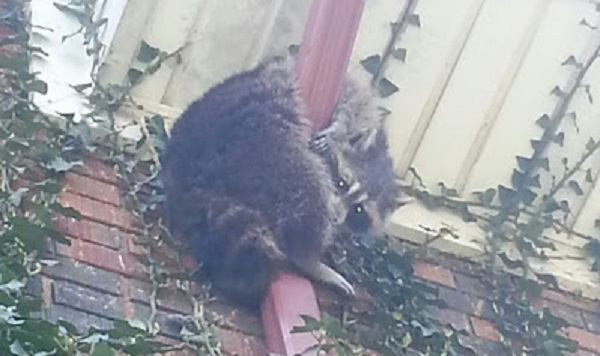If your dog or cat has the chance to explore an outdoor area, whether it is a park, campsite or your own backyard, it may encounter a wild animal. From squirrels to rats and skunks, there are many different types of animals your pet may come across during its travels. However, these meetings could end badly for your pet, so knowing how to prevent them may lower the risk of your pet being bitten or scratched. We at Skedaddle Humane Wildlife understand the importance of your furry friend’s well-being and have a few tips for wildlife control in Niagara that may help keep it safe.
1. Avoid Leaving Pet Food Outside
Providing clean water and accessible food can keep your indoor/outdoor pet healthy and comfortable, but leaving any leftover food outside might attract unwelcome visitors to your yard. Raccoons, skunks and rodents may all take advantage of what is leftover in your dog’s dish and then try to locate the food bag itself. If your pet happens to corner an animal while it is helping itself to extra food, it could get injured.
You can avoid these dangerous encounters by emptying, cleaning and storing your dog’s outdoor dishes each evening and setting them out fresh every morning. Avoid overfilling the food bowl so your dog empties it, and store food indoors in an airtight container to keep it fresh and inaccessible to insects.
2. Keep Your Yard Maintained
Unwelcome backyard visitors may be able to climb fences or use overhanging tree branches to enter your yard. This could be especially dangerous for your cat, as its prey drive might encourage it to attack any animals it finds in its territory. Larger mammals, such as raccoons, can cause serious harm to your cat if they decide to fight rather than flee. Mice and rats may carry hantavirus, which can infect both pets and humans when your cat hunts and eats these rodents.
Giving wildlife fewer avenues into your yard can help discourage visits from curious critters that may harm your cat. Keep your trees trimmed back and away from your roof and clean up your pets’ droppings so the smell does not attract other animals. Cut back tall grass and cover stacks of firewood or other material to keep out enterprising rodents that are looking for a nesting spot.
3. Do Not Let Your Pets Wander
Keeping your pets where you can supervise them at all times can help ensure they do not encounter wildlife that may harm them. When your pets wander, they could come into contact with a sick or injured animal and get scratched or bitten. These wounds can become infected quickly and make your pet ill. Allowing your cat to roam can put it in contact with rodents and birds that carry fleas, lice and other parasites.
If your dog or cat enjoys the great outdoors, consider long walks using leashes and harnesses that give your pet freedom but allow you to supervise them at the same time. Cats respond well to these devices if trained early or, if you have an older cat that will not adjust to a harness, consider screening in your patio or another outdoor area so it can observe wildlife without danger to either animal.
4. Train Your Dog
Despite your best efforts, your dog might come upon wildlife while wandering the backyard. Teaching the “Leave it!” command can make your pet think twice about interacting with an animal and give it time to escape. This training tool can also prevent an altercation and serious injuries for your pet, as some wild animals will fight ferociously when cornered.
Your pet’s welfare is important to us. Call us today for further information about how wildlife control in Niagara can help you safeguard your best friend.



